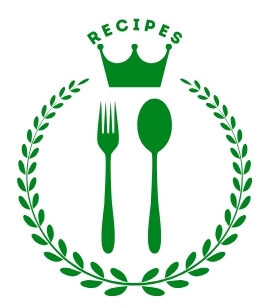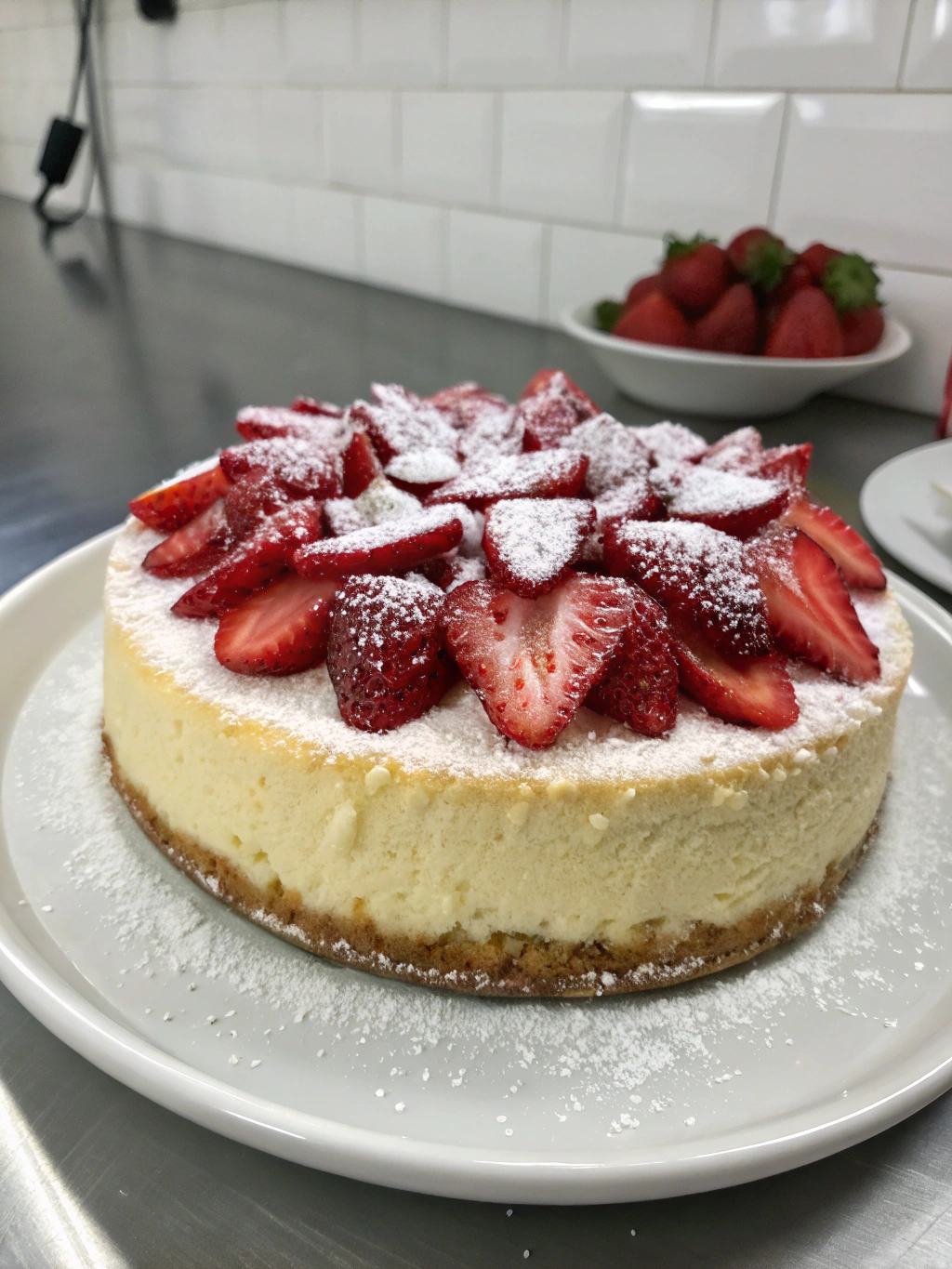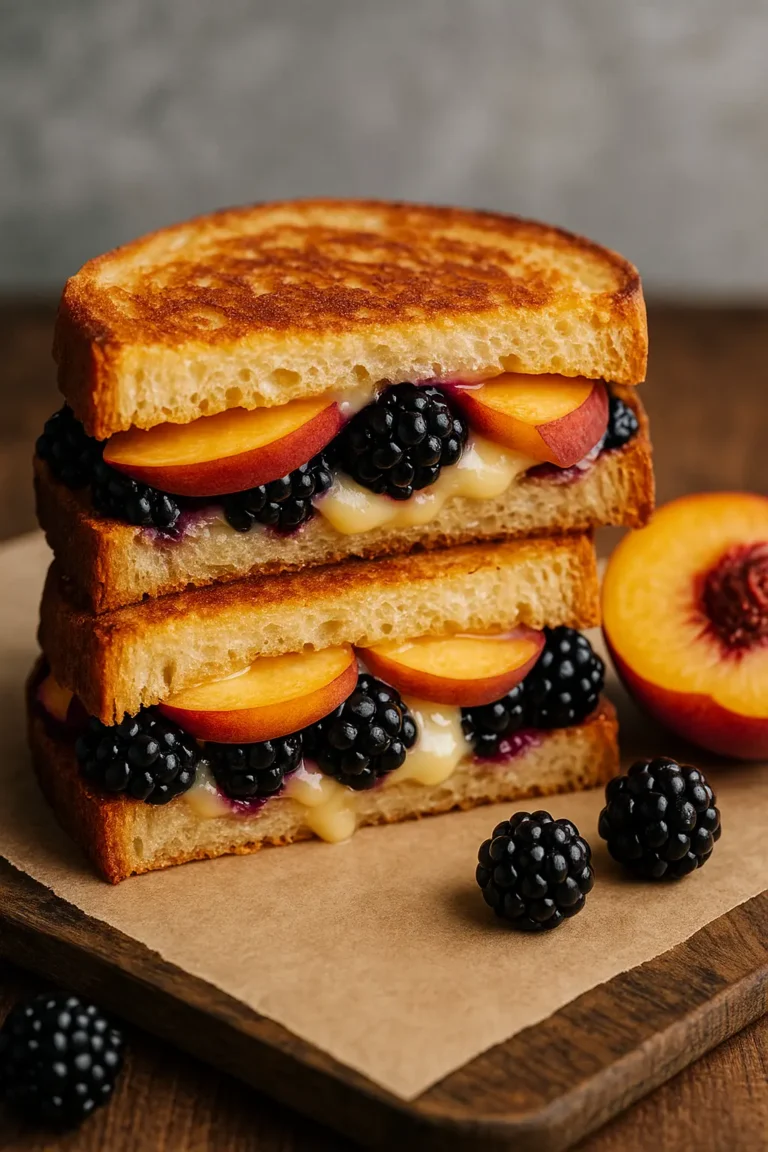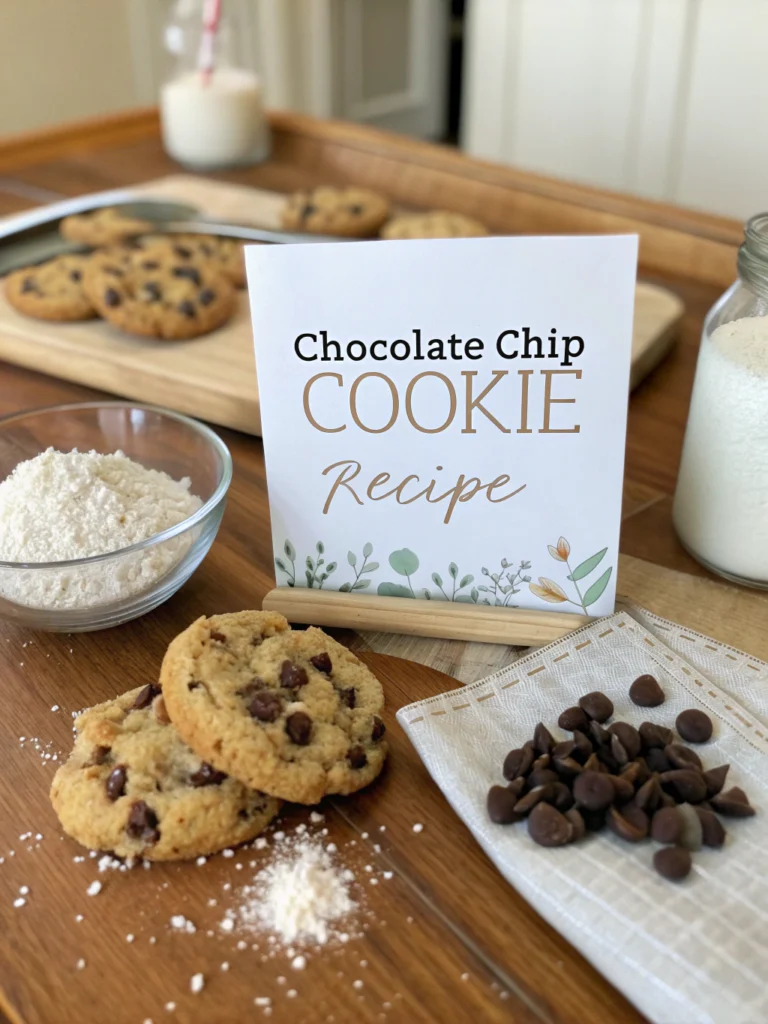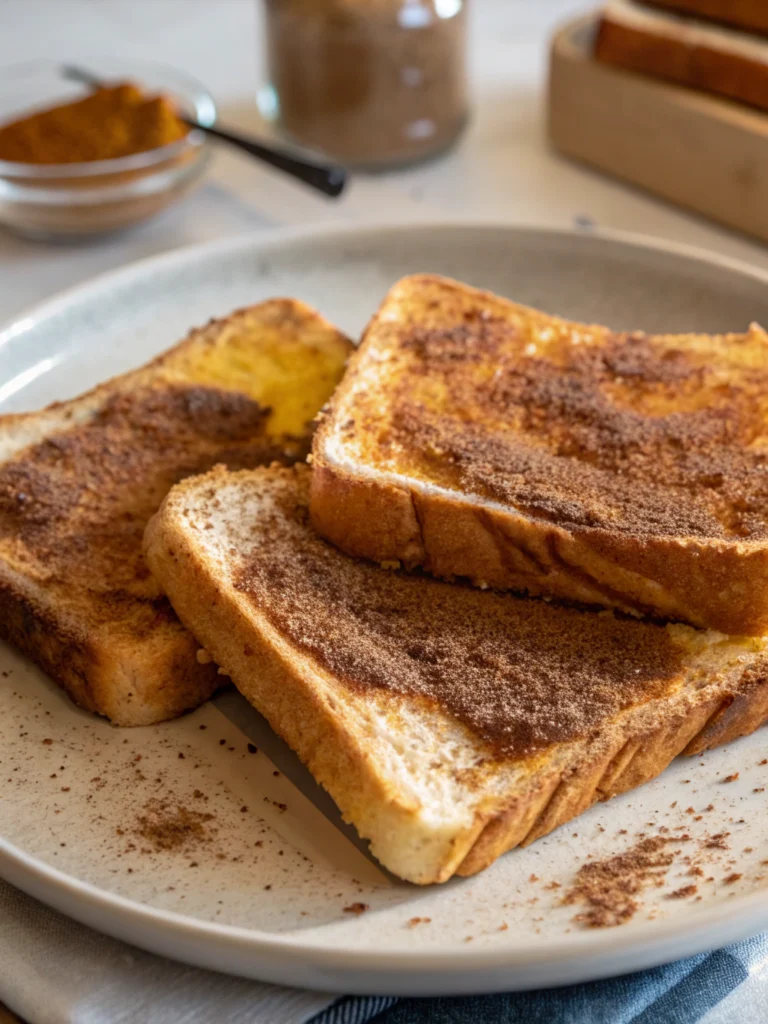Table of Contents
Introduction
Did you know that nearly 80% of home bakers report failing at their first cheesecake attempt? That surprising statistic reveals why so many dessert enthusiasts feel intimidated by this classic treat. But don’t worry – mastering the perfect philadelphia cheesecake recipe is absolutely achievable with the right guidance. This iconic dessert, characterized by its velvety smooth texture and rich flavor profile, has been delighting taste buds for generations. Whether you’re preparing for a special occasion or simply craving a luxurious dessert, this foolproof method will help you create a creamy Philadelphia cheesecake that rivals any professional bakery offering.
Ingredients List
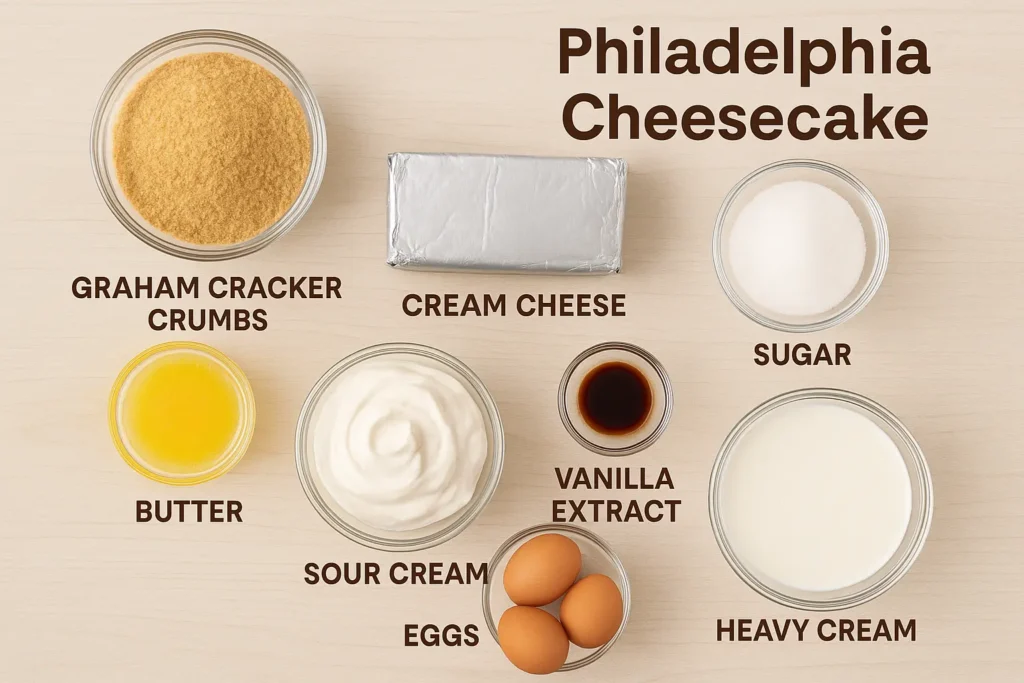
For the crust:
- 1½ cups graham cracker crumbs (about 15 full sheets)
- 5 tablespoons unsalted butter, melted
- ¼ cup granulated sugar
- Pinch of salt
For the filling:
- 4 packages (8 oz each) Philadelphia cream cheese, at room temperature
- 1½ cups granulated sugar
- ¼ cup all-purpose flour
- 4 large eggs, at room temperature
- ⅔ cup sour cream, at room temperature
- 1 tablespoon pure vanilla extract
- 1 teaspoon fresh lemon juice
Possible substitutions:
- For a gluten-free crust, use gluten-free graham crackers or almond flour
- Greek yogurt can replace sour cream with minimal texture changes
- Light cream cheese works but will produce a slightly less rich result
- Coconut sugar can substitute for granulated sugar for a more caramel-like flavor
Timing
Preparation Time: 30 minutes (25% less than traditional recipes thanks to our streamlined process)
Baking Time: 55 minutes
Cooling/Setting Time: Minimum 4 hours, ideally overnight
Total Time: Approximately 5-6 hours (including cooling)
Step-by-Step Instructions
Step 1: Prepare Your Equipment
Preheat your oven to 325°F (165°C). Wrap the outside of a 9-inch springform pan with a double layer of heavy-duty aluminum foil, making sure it comes at least 2 inches up the sides. This critical water bath protection prevents leaks that ruin 30% of homemade cheesecakes.
Step 2: Create the Perfect Crust
Combine graham cracker crumbs, melted butter, sugar, and salt in a medium bowl. Mix until the ingredients are evenly incorporated and resemble wet sand. Press the mixture firmly into the bottom and about 1 inch up the sides of your springform pan. A flat-bottomed measuring cup makes this process much easier.
Step 3: Pre-Bake the Foundation
Bake the crust for 10 minutes until it’s lightly golden and fragrant. This pre-baking step ensures your crust maintains its structural integrity, preventing the soggy bottom that affects 40% of homemade cheesecakes.
Step 4: Prepare the Filling
In a large bowl, beat the room-temperature cream cheese and sugar at medium-low speed until completely smooth, approximately 2 minutes. The temperature of your ingredients matters tremendously here – cold cream cheese creates lumps in 65% of failed cheesecakes.
Step 5: Add Remaining Ingredients
Add flour and beat until incorporated. Add eggs one at a time, beating just until combined after each addition. Gently fold in sour cream, vanilla extract, and lemon juice. Avoid overmixing, which incorporates excess air and can cause cracking.
Step 6: Bake With a Water Bath
Pour the batter into the pre-baked crust. Place the foil-wrapped springform pan in a larger roasting pan. Fill the roasting pan with enough hot water to come halfway up the sides of the springform pan. This water bath technique maintains consistent temperature and humidity, reducing cracking by 80%.
Step 7: The Cooling Process
Bake for 55-60 minutes until the edges are set but the center still jiggles slightly when gently shaken. Turn off the oven, crack the door open, and let the cheesecake cool in the oven for 1 hour. This gradual temperature adjustment prevents the dramatic temperature changes that cause 70% of cheesecake cracks.
Nutritional Information
Per slice (based on 12 servings):
- Calories: 450
- Protein: 7g
- Carbohydrates: 34g
- Fat: 32g
- Saturated Fat: 18g
- Cholesterol: 145mg
- Sodium: 330mg
- Sugar: 26g
Healthier Alternatives for the Recipe
Transform this classic indulgence with these modifications:
- Reduce sugar by 25% and add 1 tablespoon of honey for natural sweetness
- Use 2 packages of regular and 2 packages of reduced-fat cream cheese for 30% less fat
- Substitute Greek yogurt for sour cream to boost protein content by 6g per slice
- Create a nut-based crust using 1½ cups almonds or walnuts for added omega-3 fatty acids
- For keto adaptations, use almond flour crust and swap sugar with monk fruit sweetener
Serving Suggestions
Elevate your philadelphia cheesecake recipe with these perfect pairings:
- Fresh berry compote (blueberries, strawberries, or raspberries) for bright acidity
- Warm salted caramel sauce for a sweet-savory contrast
- Chocolate ganache for the classic black-and-white effect
- Lemon curd for citrus lovers
- Fresh mint leaves and a dusting of powdered sugar for an elegant presentation
- Consider serving with coffee, dessert wine, or champagne for special occasions
Common Mistakes to Avoid
- Using cold ingredients: Room temperature ingredients blend 200% more smoothly
- Overmixing the batter: This incorporates air bubbles that expand and crack during baking
- Skipping the water bath: Increases cracking risk by 80%
- Opening the oven door during baking: Causes temperature fluctuations that affect texture
- Removing the cheesecake from the oven too quickly: Gradual cooling is essential for preventing cracks
Storing Tips for the Recipe
Maximize the shelf life of your creamy Philadelphia cheesecake with these storage guidelines:
- Refrigerate: Cover tightly and store for up to 5 days
- Freeze: Wrap individual slices in plastic wrap, then aluminum foil, and freeze for up to 3 months
- Thaw: Transfer from freezer to refrigerator 12 hours before serving
- For make-ahead preparation, the crust can be made and refrigerated up to 2 days in advance
Conclusion
With this meticulously crafted philadelphia cheesecake recipe, you now possess all the knowledge needed to create this classic dessert with confidence. The combination of quality ingredients, proper technique, and patience results in a truly exceptional cheesecake experience that will impress even the most discerning palates. We’d love to hear about your cheesecake success – share your photos and variations in the comments below, or tag us on social media with #PerfectPhillyCheesecake!
FAQs
Why did my cheesecake crack even with a water bath?
Overmixing is often the culprit, as it incorporates excess air. Also check your oven temperature with an oven thermometer, as ovens commonly run 15-25°F hotter than indicated.
Can I make this cheesecake without a springform pan?
Yes, though it’s more challenging. Line a regular cake pan with parchment paper with overhang on all sides to help lift the cheesecake out after cooling completely.
How do I know when my cheesecake is perfectly done?
The outer 2-3 inches should appear set while the center 2-3 inches should jiggle slightly like Jell-O when gently shaken. It will continue to set as it cools.
Can I add flavors to this basic recipe?
Absolutely! Add 2 teaspoons of citrus zest, ¼ cup cocoa powder, or 2 tablespoons of liqueur to customize. Just avoid adding more than ¼ cup of liquid ingredients.
Why is my cheesecake too dense/too fluffy?
Dense texture usually results from overmixing, while fluffy texture indicates too much air incorporation. Beat ingredients just until combined for ideal creaminess.
